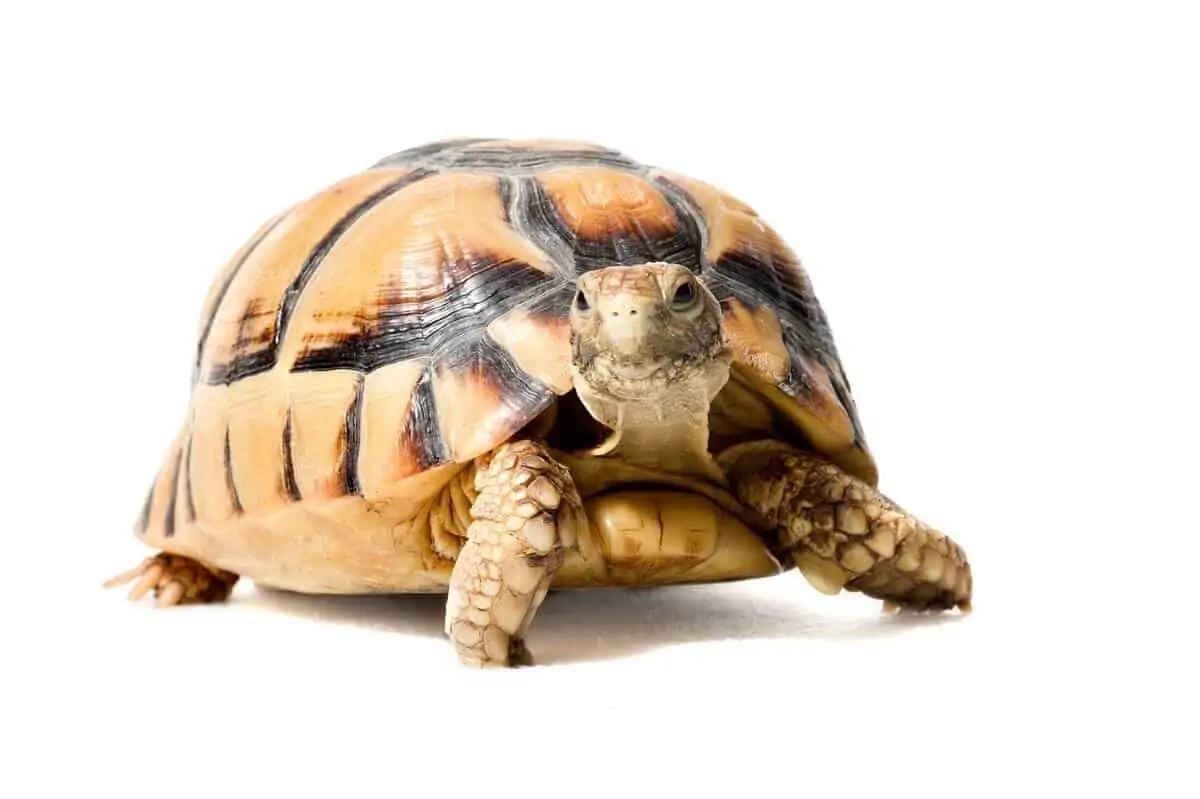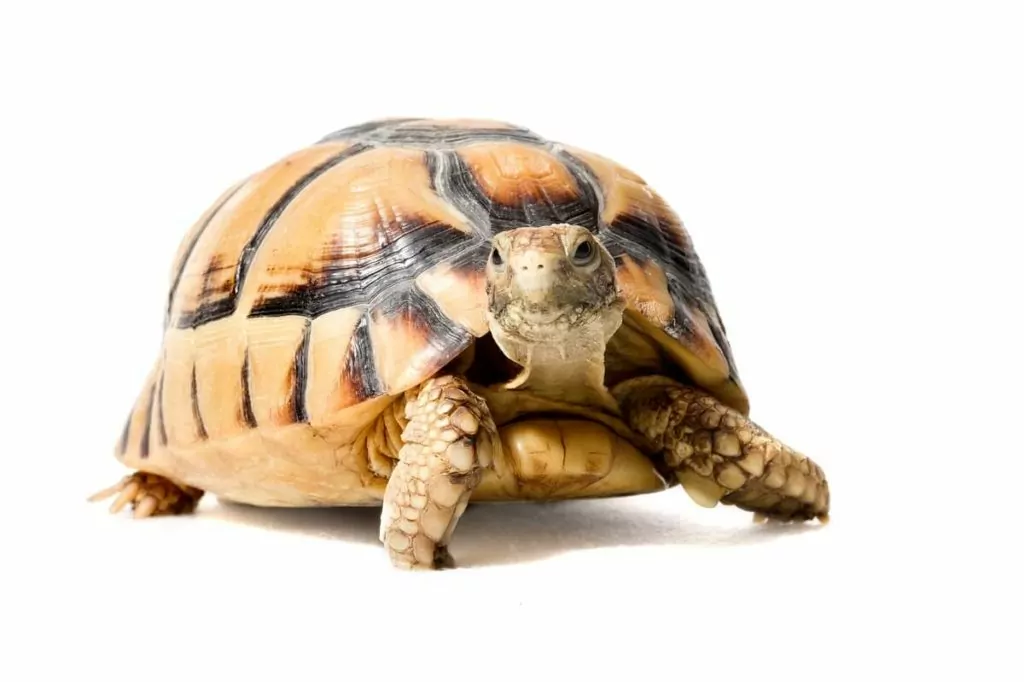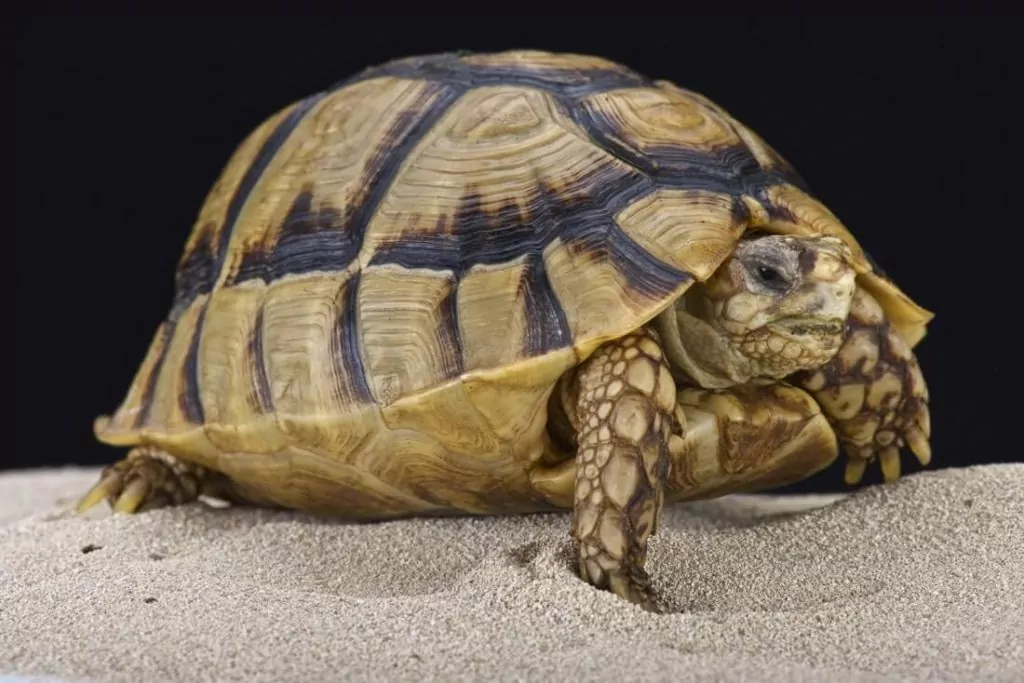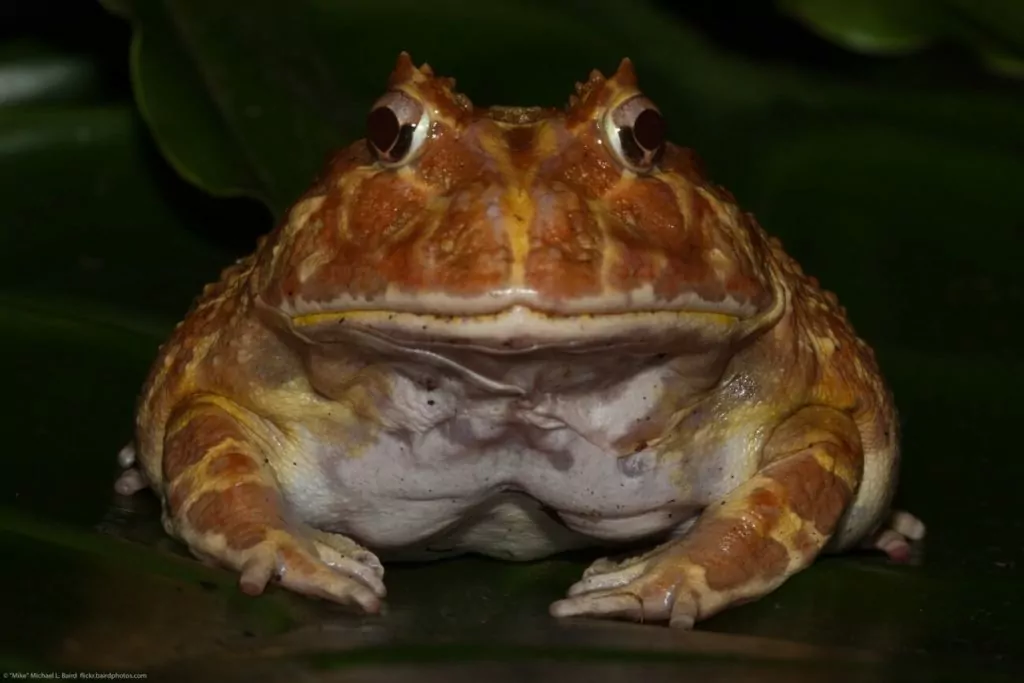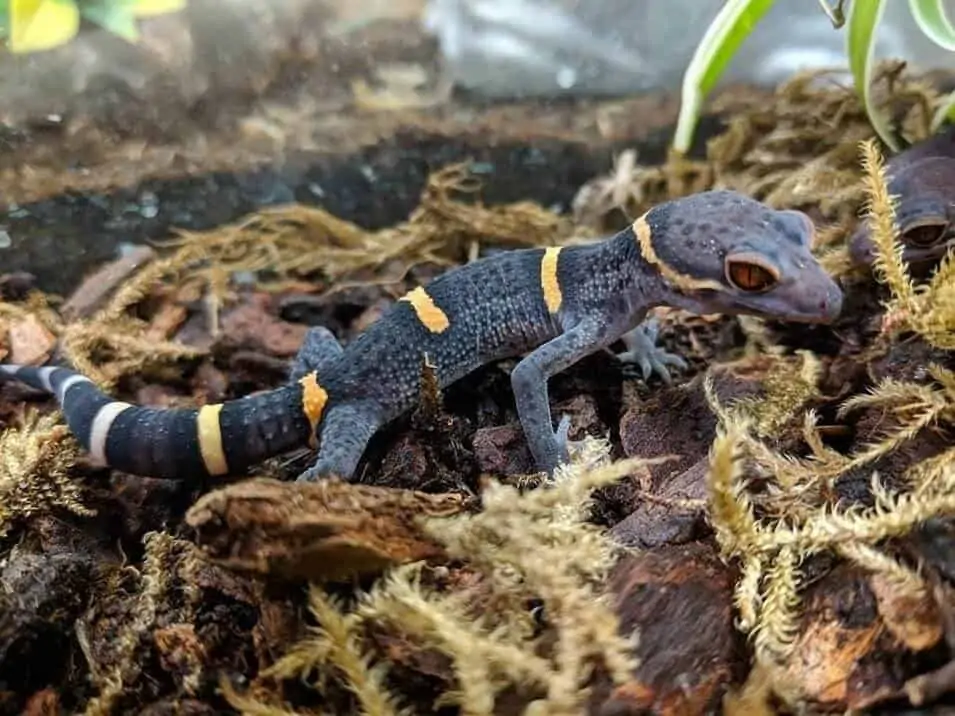The Egyptian tortoise is a wonderful little reptile that can thrive in captivity. They’re beautiful, fairly active, and have quite a long lifespan!
But in order to successfully keep these tortoises as pets, you need to have a bit of experience. These creatures need some very specific conditions in order to thrive.
This guide will teach you about Egyptian tortoise care. In it, you’ll learn about their diet, size, enclosure, lifespan, and more!
Table of Contents
Species Summary
The Egyptian tortoise (Testudo kleinmanni) is also sometimes known as Kleinmann’s tortoise or Leith’s tortoise. This sweet, little tortoise is native to the arid, desert areas of Egypt, Libya and southern parts of Israel.
Despite their nice temperament, we don’t really recommend these pet tortoises for beginner reptile owners. The Egyptian tortoise has some fairly specific care requirements that are best left to more experienced caretakers. However, if you do have the recommended level of experience, the Egyptian tortoise can be a very rewarding and interesting pet.
If you are seriously thinking about owning this species, then there are a couple of important points you need to be aware of:
- The Egyptian tortoise is protected in Egypt, and it is considered to be a high risk animal by the Convention On International Trade In Endangered Species.
- The only way to legally get one of these tortoises is to buy one from a reputable breeder in your country. If you’re not sure where the tortoise came from, then don’t buy it!
Appearance & Colors
Although the Egyptian tortoise isn’t known for its striking colors or patterns, it does have its own special beauty.
The shell can be anywhere from a light cream to a rich, golden color and can even be gray at times. Typically, the color of the shell is a lovely light yellow.
However, it’s the platstron that really sets this tortoise apart from other similar tortoises.
Turn this tortoise over to look at the plastron, and you will see two dark chevrons that contrast beautifully with the pale yellow plastron background. These characteristic markings can be seen in Egyptian tortoises of all ages.
Expert Tip: Due to sexual dimorphism (which means that males and females can look differently) the female’s shell tends to be a bit more domed than that of the male Egyptian tortoise.
Average Egyptian Tortoise Size
The average Egyptian tortoise size is five inches for females, and four inches for males. This is the typical max size of a fully grown tortoise when given proper care.
But it’s the difference in weight that really demonstrates the sexual dimorphism of this tortoise. While a male Egyptian tortoise can weigh around 105 grams, the female can weigh in at a whopping 400 grams!
This sometimes causes beginners to assume that a male and female come from different species. The size difference on their appearance is rather striking!
Lifespan
The typical Egyptian tortoise lifespan is between 70 and 100 years when given proper care, space, and nutrition. If you’re looking for a tortoise that will provide you with a lifetime of enjoyment, this is definitely a good species to consider!
Expert Tip: Always make sure that you’re prepared for a long term commitment before you purchase these reptiles. You should do this with any pet, but it’s especially important due to the high-risk population status of Egyptian tortoises.
Egyptian Tortoise Care
Proper Egyptian tortoise care requires a certain set of reptile husbandry skills that can only be acquired through experience.
Your Egyptian tortoise is going to need a carefully planned diet and very specific humidity and temperature requirements. You will also need to provide your tortoise with proper housing and safe enclosure enhancements.
Before purchasing one of these reptiles, you will need to carefully think about whether you will be able to give this reptile the proper care it needs for potentially 70 years or more! Taking care of one of these lovely animals is often, literally, a lifelong commitment.
Enclosure Size
Since an Egyptian tortoise has such a potentially long lifespan, you’ll need to create an enclosure setup that is spacious and comfortable.
We recommend using a sturdy tortoise table or a wooden vivarium as the base material. Not only will these items create the perfect environment for your tortoise, but they can make attractive additions to your home.
Expert Tip: Wood is suggested over other materials because it is very efficient for maintaining the correct environmental temperature.
At an absolute minimum, the enclosure dimensions should be 2 by 2 by 2 feet. But if you have room to make it larger, then we highly recommend doing so! An enclosure of this size will house a breeding pair quite comfortably, or you can use it for a single tortoise as well.
The rules are a little different for hatchlings. If you have a hatchling, it can easily be kept in a small plastic bin or shoebox until it gets bigger (which is when you’ll upgrade them to a standard enclosure).
Habitat Setup
Designing the interior of your tortoise’s enclosure can be lots of fun, and you can get creative as long as you follow a few basics.
The first thing you’ll need to decide on is the substrate. Since your Egyptian tortoise requires a pretty low humidity level, you will need to choose a substrate that does not trap too much moisture.
Sand, soil or beech wood chips are all solid options. Add the substrate to a depth of about two or three inches. If you have a nesting female, you may want to increase the substrate depth to five inches or so.
Plants add a nice touch to an Egyptian tortoise habitat, and there are plenty of really nice looking artificial plants to choose from that will bring about the desert vibe you may be looking for.
Rocks, logs, reptile hides or small caves are also great additions to an enclosure, and your tortoise will really appreciate having nice, safe places to hide and relax. This will also give them more flexibility when it comes to temperature regulation (more on that in the section below).
Temperature & Lighting
Egyptian tortoises are like other reptiles in that they require a temperature gradient in their enclosure. Basically, this means that they need a warmer basking area and a cooler, body temperature lowering area.
Luckily, this is not as complicated as it sounds. When you are initially setting up your enclosure, take a moment to dedicate one side of it to the basking side, and make the opposite side the cool-down side.
The basking side should remain between 85 and 90 degrees Fahrenheit. Using something like a basking bulb should be all you need to maintain this. Keep it on for only 10 to 12 hours a day.
Expert Tip: Make sure that you don’t place the bulb too close to the tortoise, or your tortoise could receive a burn.
In a desert environment, it can become quite cool in the evening, and you will need to mimic this temperature drop. At night, the ambient temperature in the enclosure can drop to 63 to 75 degrees Fahrenheit.
As far as lighting for your Egyptian tortoise goes, you’ll need to provide your tortoise with supplemental UVB lighting. This is because, in the wild, the Egyptian tortoise gets all of the UVB light it needs in order to produce vitamin D3. However, in an enclosure environment, they don’t get all of this important UVB lighting. Using a fluorescent UVB tube usually works pretty well.
Humidity
An important thing to remember about Egyptian tortoise care is that these reptiles do not tolerate a high level of humidity. In fact, humidity levels in the enclosure should remain between 20 and 30 percent.
In order to monitor the humidity level in the enclosure you should invest in a well-made and accurate hygrometer. This will allow you to keep tabs on the state of the enclosure and make adjustments if needed (which will prevent any health issues from occurring).
A low-quality hygrometer can do more harm than good, because it can cause you to make unnecessary adjustments to the humidity in the enclosure. The difference in cost between a reliable hygrometer and a poorly-made one isn’t that much.
Water
There seems to be a misconception about water requirements when it comes to Egyptian tortoise care. While it’s natural habitat is a dry, desert environment, you will still need to provide it with a constant supply of fresh water.
Placing several shallow dishes throughout the enclosure (depending on how much room you have to work with) is ideal. Just make sure that the water is always clean and fresh. This may mean changing the water several times per day.
Expert Tip: Some people soak their Egyptian tortoises a couple of times a week to induce them to go to the bathroom, but this should not be done if your pet appears to be overly stressed by it.
Food & Diet
Ok, so let’s talk about diet.
For maximum health and longevity, your Egyptian tortoise is going to need to eat lots of dark, leafy greens. By this we mean foods such as:
- Dandelion greens
- Leaf lettuce
- Chickweed
- White nettle
- Corn poppy.
Fruits like bananas or apples are fine for a once or twice a week treat. Depending on the preference of your tortoise, you can feed it either daily or every other day.
Don’t feed your Egyptian tortoise greens such as spinach, rhubarb or parsley. These greens contain oxalic acid, and oxalic acid can cause your tortoise to develop kidney or bladder stones.
Potential Health Issues
Egyptian tortoises are prone to a variety of medical issues, so we suggest that you become familiar with a few of the most common ones.
In general, it’s a very good idea to closely observe your tortoise every day. If you notice that something is not quite right, you will have a chance to take it to an experienced veterinarian before the condition gets out of hand.
Upper and lower respiratory infections, parasitic infestations, metabolic bone disease and herpesviral infection are all health issues that are fairly common in Egyptian tortoises. Improper shedding, kidney stones and pyramid growth syndrome are a few other less common issues.
Fortunately, providing good care will significantly reduce the chance of your pet becoming sick. Be attentive, stay consistent, and your tortoise will likely live a very long and happy life!
Behavior & Temperament
The Egyptian tortoise is a pretty mild, non-aggressive pet, but it does not like to be overhandled or picked up too often (sometimes resulting in some grumpy behavior). You may also observe some aggression if you put two males together in the same enclosure, which is why many owners avoid this altogether.
This tortoise is generally more active at dawn and at dusk, so this is when you will be able to see them foraging for food and exploring their environment. It’s always fun when they start marching around the enclosure!
Handling Them
As we mentioned in the previous section, Egyptian tortoises don’t like to be handled too much. While they won’t necessarily become aggressive if you handle them, they will likely become stressed (even if they don’t show it).
In general, it’s best to leave them alone to do their thing. They are lots of fun to watch, so just enjoy observing them as they go about their day!
Conclusion
As you can see, Egyptian tortoise care requires a bit of knowledge and experience to be done properly. While we wouldn’t consider these reptiles to be “difficult” they’re not the most beginner-friendly.
But for anyone who is equipped to keep these tortoises as pets, we highly recommend it! These are some of our favorite reptiles, and we know plenty of other owners who think the same thing.
If there’s anything you think we should add to this care sheet, don’t hesitate to let us know. We’re always trying to make our guides as useful as possible, so feedback from our readers is always welcome!

